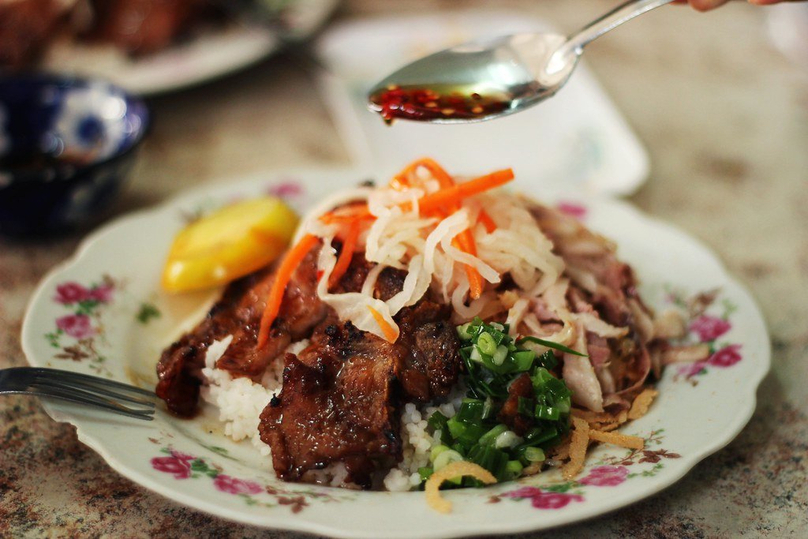
Culinary destinations to attract Vietnamese travelers during Lunar New Year holiday
Da Lat, Nha Trang and Phu Quoc are among top trending destinations for Vietnamese travelers thanks to their must-eat delicacies, according to Booking.com.
Lunar New Year (Tet) is an occasion for the Vietnamese people to revisit cultural traditions, from doing rituals with families and spending time with beloved people to greeting each other with best wishes.
While there has been an emergence of new behaviors in celebrating the lunar new year, two things that remain constant are traveling, whether back to one’s hometown or to explore Vietnam and beyond, and eating heartily.
Varun Grover, country head of in of Booking.com Vietnam said that food and travel always come together, and this is something that their Travel Predictions 2024 report highlighted. "We recognize that more Vietnamese travelers want to discover more of the must-eat delicacies in destinations they go to."
Da Lat town
Located on the Lam Vien Plateau in the Central Highlands, Da Lat is one of the destinations in Vietnam that offers a cool climate, making it a perfect escape from the heat. More than its cool climate, the "City of Eternal Spring" is a popular Tet destination for tourists to witness the blooming of the cherry blossoms which take place between January to February.
Escape to the cool embrace of Da Lat, where aromatic ca phe phin (filter coffee), Vietnamese cold coffee, invigorates the senses. While in Da Lat, travelers also sample local delicacies like com lam, sticky rice cooked in bamboo tubes, infused with the fresh mountain air.
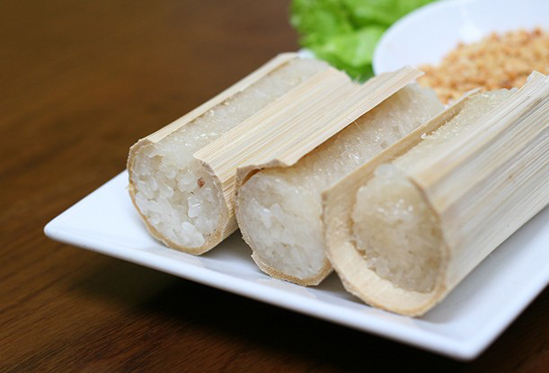
Com lam, sticky rice cooked in bamboo tubes. Photo courtesy of Booking.com.
Nha Trang town
Nha Trang is one of the six beach destinations that made it to the top 10 most searched destinations in Vietnam for this Tet. It is a coastal city known for its beautiful beaches, fascinating cultural sites, and vibrant nightlife. It is an ideal destination for this Tet for water sports lovers, and those who simply just want to enjoy the beach ahead of the summer heat.
Those in Nha Trang should try bun sua which is made of rice vermicelli, jellyfish and steamed fish in a savory broth, banh can, a crispy rice cake topped with quail egg, meat or seafood, and banh uot dien khanh, which is made with rice flour and tapioca flour, topped with onion, meat paste, pureed dried shrimp and mashed green beans.
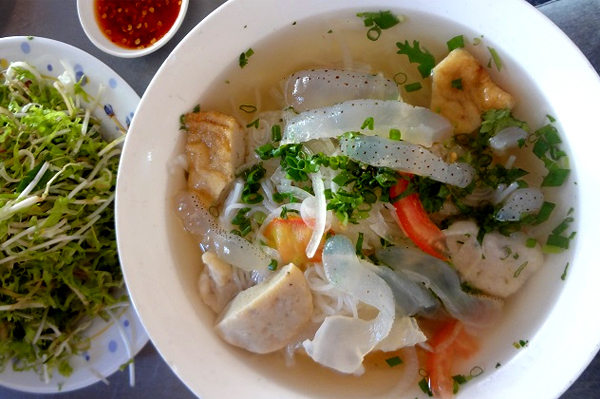
Bun sua which is made of rice vermicelli, jellyfish and steamed fish in a savory broth. Photo courtesy of Ngoisao.net.
Danang city
Located in central Vietnam, Da Nang offers a unique blend of food profiles and techniques from the northern and southern regions of the country. Owning the most beautiful beaches along the coastline, seafood plays a central role in the cuisine of the city with spices typically seen in central Vietnamese dishes such as lemongrass, chili, turmeric, and garlic. These add boldness and complexity to each dish.
Some of the must try dishes include banh xeo which has crispy with the right thickness, combined with shrimp, beef, beansprouts, and other fresh ingredients; bun cha ca, a fish cake noodle soup; and nem lui which consists of lemongrass skewers with ground pork, commonly served with rice paper, and fresh herbs.
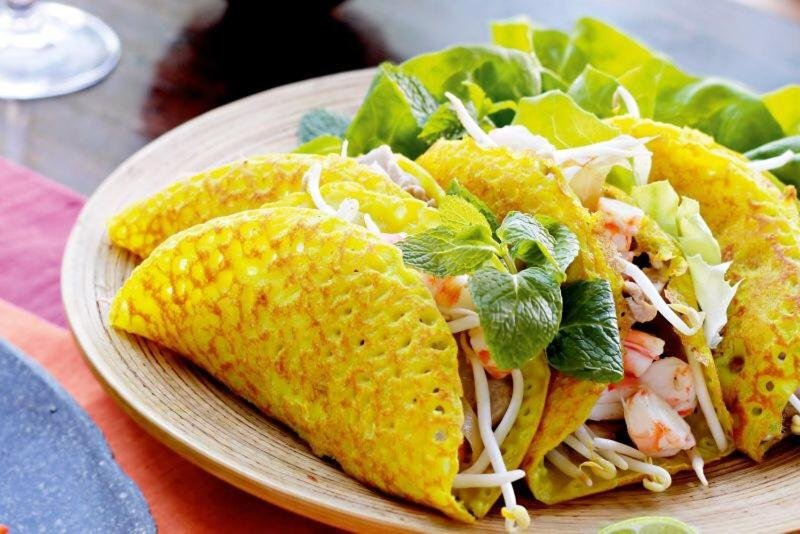
Banh xeo which has crispy with the right thickness, combined with shrimp, beef, beansprouts, and other fresh ingredients. Photo courtesy of Booking.com.
Vung Tau city
Vung Tau is one of the most accessible coastal city escapes from Ho Chi Minh City, making it an ideal weekend getaway for those already exploring HCMC. While known for its beaches, Vung Tau has more to offer with their trails allowing for great trekking and hiking, and different historical landmarks which appeal to travelers wanting to learn more about the city’s history.
Seafood is a must when one is in Vung Tau. Some of the local specialties include the hu tieu muc, which is a squid noodle soup which has lean meatballs, fresh herbs, and a rich savory broth; banh khot, which are small, fried, savory pancakes made of rice flour topped with shrimp, papaya, and various herbs, and for the adventurous; lau ca duoi or stingray hotpot which includes marinated stingray that comes in a sour and spicy broth.
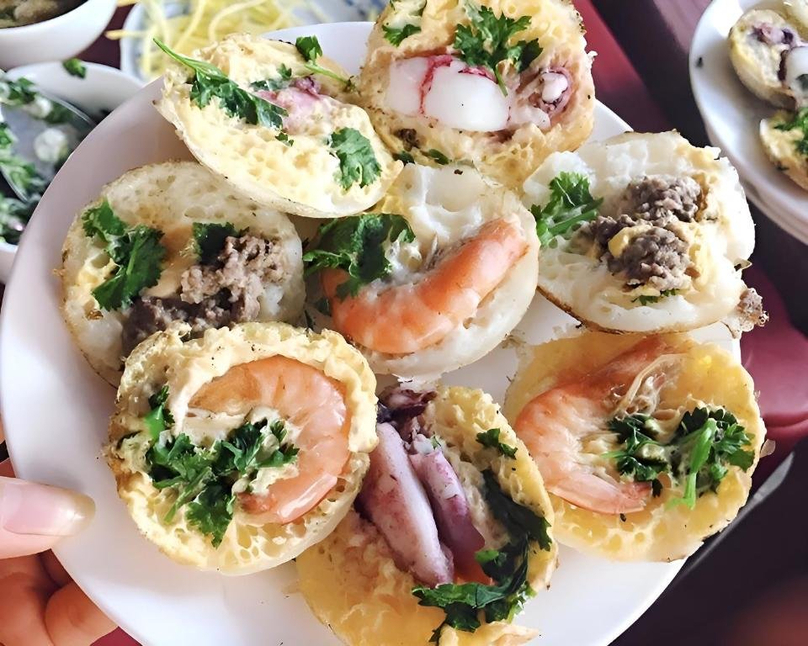
Banh khot, which are small, fried, savory pancakes made of rice flour topped with shrimp, papaya, and various herbs. Photo courtesy of Booking.com.
Phu Quoc island
Phu Quoc is the largest island of Vietnam, recognized for its clear waters, making it the perfect destination for travelers who enjoy water activities. With a diverse marine life, Phu Quoc offers snorkeling and diving enthusiasts great sights to behold from vibrant coral reefs to a variety of sea creatures.
Besides being known for its beaches, Phu Quoc is also known to be the Fish Sauce capital of the country, which influences some of their local dishes. Some must try dishes include bun ken, a noodle soup which has a broth made from dried shredded fish, coconut milk and curry powder, and is served with various herbs, and with sweet and sour fish sauce; goi ca trich, a herring salad made with shredded coconut and herbs, complemented by a sauce which includes chili, garlic, peanuts, and fish sauce; and bun quay, which is a noodle soup where you have to mix the rice noodles with broth and seafood, with a dipping sauce of your own concoction.
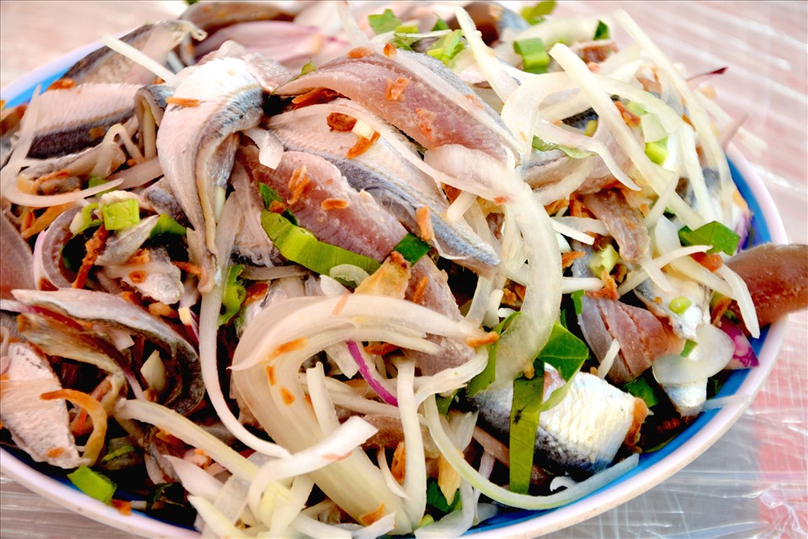
Goi ca trich, a herring salad made with shredded coconut and herbs, complemented by a sauce which includes chili, garlic, peanuts, and fish sauce. Photo courtesy of Lao Dong (Labor) newspaper.
Ho Chi Minh City
Another culinary hub of the country is HCMC which differentiates its food profile with bold and intense flavors. Spicy, sweet, and savory, the local dishes of HCMC benefit from the tropical climate with fresh produce being incorporated to the natural sweetness of these dishes.
Much like the rest of Vietnam, dishes from HCMC include fresh vegetables and aromatics, balancing the flavor of each dish. Must try food include com tam or broken rice; ca kho to or claypot fish which derives its distinct dark color from caramelized sugar; and of course, banh mi, the iconic Vietnamese sandwich which makes use of baguette and is packed with different fillings and sauces.
